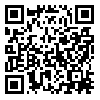1. Park, B. S., (2015), Adaptive formation control of underactuated autonomous underwater vehicles, Ocean Engineering. 96, 1-7.
2. Do, K. D., (2012), Formation control of underactuated ships with elliptical shape approximation and limited communication ranges, Automatica. 48, 1380-1388.
3. Dong, W., (2010), Cooperative control of underactuated surface vessels, IET control theory & applications. 4, 1569-1580.
4. Cui, R., Sam Ge, S., Voon Ee How, B. & Sang Choo, Y., (2010), Leader–follower formation control of underactuated autonomous underwater vehicles, Ocean Engineering. 37, 1491-1502.
5. Lawton, J. R., (2000), A behavior-based approach to multiple spacecraft formation flying, Citeseer.
6. Ren, W. & Sorensen, N., (2008), Distributed coordination architecture for multi-robot formation control, Robotics and Autonomous Systems. 56, 324-333.
7. Do, K., (2011), Practical formation control of multiple underactuated ships with limited sensing ranges, Robotics and Autonomous Systems. 59, 457-471.
8. Gazi, V., (2005), Swarm aggregations using artificial potentials and sliding-mode control, Robotics, IEEE Transactions on. 21, 1208-1214.
9. Hu, Q., Dong, H., Zhang, Y. & Ma, G., (2015), Tracking control of spacecraft formation flying with collision avoidance, Aerospace Science and Technology. 42, 353-364.
10. Ranjbar-Sahraei, B., Shabaninia, F., Nemati, A. & Stan, S.-D., (2012), A novel robust decentralized adaptive fuzzy control for swarm formation of multiagent systems, Industrial Electronics, IEEE Transactions on. 59, 3124-3134.
11. Wang, Y., Yan, W. & Li, J., (2012), Passivity-based formation control of autonomous underwater vehicles, IET control theory & applications. 6, 518-525.
12. Ghommam, J. & Saad, M., (2014), Backstepping-based cooperative and adaptive tracking control design for a group of underactuated AUVs in horizontal plan, International Journal of Control. 87, 1076-1093.
13. Li, S. & Wang, X., (2013), Finite-time consensus and collision avoidance control algorithms for multiple AUVs, Automatica. 49, 3359-3367.
14. Dong, W. & Farrell, J., (2008), Formation control of multiple underactuated surface vessels, IET Control Theory & Applications. 2, 1077-1085.
15. Ghommam, J., Calvo, O. & Rozenfeld, A., (2008), Coordinated path following for multiple underactuated AUVs. Paper presented at the OCEANS 2008-MTS/IEEE Kobe Techno-Ocean.
16. Peng, Z., Wang, D., Chen, Z., Hu, X. & Lan, W., (2013), Adaptive dynamic surface control for formations of autonomous surface vehicles with uncertain dynamics, Control Systems Technology, IEEE Transactions on. 21, 513-520.
17. Siegwart, R. & Nourbakhsh, I. R., (2012), Autonomous mobile robots, Massachusetts Institute of Technology.
18. Hwang, Y. K. & Ahuja, N., (1992), Gross motion planning—a survey, ACM Computing Surveys (CSUR). 24, 219-291.
19. Kuffner, J. J. & LaValle, S. M., (2000), RRT-connect: An efficient approach to single-query path planning. Paper presented at the Robotics and Automation, 2000 Proceedings ICRA'00 IEEE International Conference on.
20. Aalbers, A., (2013), Obstacle avoidance using limit cycles, TU Delft, Delft University of Technology.
21. Li, Y., Gao, J., Su, X. & Zhao, J., (2014), Cooperation control of multiple miniature robots in unknown obstacle environment, Proceedings of the Institution of Mechanical Engineers, Part I: Journal of Systems and Control Engineering, 0959651814560422.
22. Kim, D.-H. & Kim, J.-H., (2003), A real-time limit-cycle navigation method for fast mobile robots and its application to robot soccer, Robotics and Autonomous Systems. 42, 17-30.
23. Soltan, R. A., Ashrafiuon, H. & Muske, K. R., (2011), ODE-based obstacle avoidance and trajectory planning for unmanned surface vessels, Robotica. 29, 691-703.
24. Ghasemi, M., Nersesov, S. G., Clayton, G. & Ashrafiuon, H., (2014), Sliding mode coordination control for multiagent systems with underactuated agent dynamics, International Journal of Control. 87, 2615-2633.
25. Fossen, T. I., (1994), Guidance and control of ocean vehicles, Wiley New York.
26. Rahimiyan, M., (1388), Dynamic simulation of AUV, Sharif university of technology. (In Persian)
27. Do, K. D. & Pan, J., (2009), Control of ships and underwater vehicles: design for underactuated and nonlinear marine systems, Springer.
28. Bondy, J. A. & Murty, U. S. R., (1976), Graph theory with applications, Macmillan London.
29. Do, K. D. & Pan, J., (2006), Underactuated ships follow smooth paths with integral actions and without velocity measurements for feedback: theory and experiments, Control Systems Technology, IEEE Transactions on. 14, 308-322.
30. Do, K., (2010), Practical control of underactuated ships, Ocean Engineering. 37, 1111-1119.
31. Ghommam, J. & Mnif, F., (2009), Coordinated path-following control for a group of underactuated surface vessels, Industrial Electronics, IEEE Transactions on. 56, 3951-3963.
32. Khalil, H. K. & Grizzle, J., (1996), Nonlinear systems, Prentice hall New Jersey.
















































